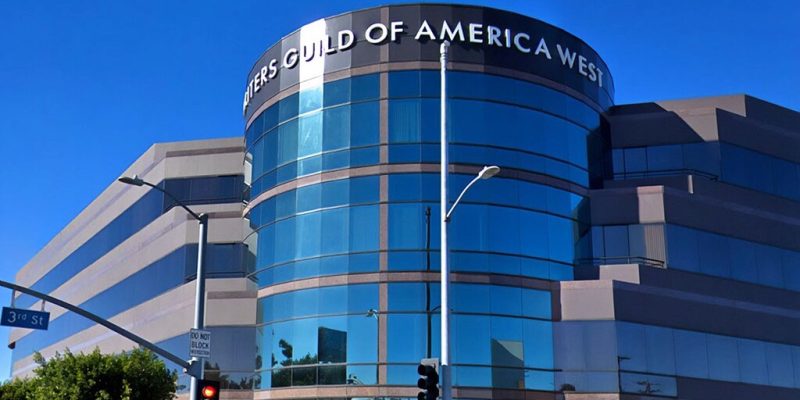DGA Union: What It Is, How It Works, and Why It Matters in Film and TV

The DGA union, short for the Directors Guild of America, is one of the most powerful labor unions in the U.S. entertainment industry. It represents directors and other creative professionals who work behind the scenes in film, television, commercials, documentaries, and new media.
For aspiring and working professionals alike, understanding how the DGA union operates—and what it offers—can be a career-defining move.
What Does the DGA Union Do?
The DGA union exists to protect the creative, economic, and workplace rights of its members. It does this by:
- Negotiating collective bargaining agreements with studios and producers
- Ensuring fair wages, health benefits, and pension plans
- Setting working conditions and hours
- Providing access to arbitration and legal support
- Offering career development and networking opportunities
Who Does the DGA Represent?
The DGA represents more than 19,000 members across various job titles in the entertainment industry, including:
- Directors
- Assistant Directors (ADs)
- Unit Production Managers (UPMs)
- Associate Directors
- Stage Managers
- Production Associates
Whether you’re working on a Netflix drama, a Marvel movie, or a live television broadcast, if the production is covered by a DGA contract, your role could be eligible for union protection.
Benefits of Joining the DGA Union
Fair Compensation
The DGA negotiates minimum pay rates for all job categories, which often exceed non-union pay.
Health & Pension Plans
DGA members receive comprehensive medical coverage and access to a pension plan that supports them long after retirement.
Workplace Protections
Rules around work hours, meal breaks, overtime, and safety are enforced through union contracts.
Residuals
Members earn residual payments from reruns, syndication, streaming platforms, and international distribution.
Legal Support & Arbitration
The union can mediate or represent members in disputes with employers or producers.
Professional Development
Workshops, networking events, and exclusive screenings help members stay ahead in the industry.
How to Join the DGA Union
Secure Union-Eligible Work
You must first be hired on a project covered by a DGA collective bargaining agreement. This often happens via:
- A union film or TV production
- A signatory commercial production company
Accumulate Required Days (for Certain Roles)
Roles like Assistant Director or UPM require a minimum number of days worked on qualifying productions (e.g., 400 days for 2nd ADs in certain regions).
Apply for Membership
You’ll need:
- Proof of qualifying work
- A completed application
- Payment of initiation fees, which can range from $3,000 to $13,000 depending on your category and location
Pay Annual Dues
Members are required to pay ongoing dues based on income, with a minimum annual amount and a percentage of gross earnings above a set threshold.
DGA Union Contracts and Agreements
The DGA negotiates separate contracts for:
- Theatrical Films
- Television (Episodic and Live)
- Commercials
- Documentaries
- New Media (Streaming)
- Public Television
Each contract outlines pay rates, residuals, hours, and creative rights. These contracts are renegotiated every few years through collective bargaining.
DGA and the AMPTP: Industry Negotiations
The DGA often negotiates with the Alliance of Motion Picture and Television Producers (AMPTP) on major industry contracts. These negotiations can affect industry-wide issues like:
- Artificial Intelligence (AI) use in production
- Streaming residuals
- Working hour regulations
- Diversity and inclusion standards
The DGA is also part of a wider ecosystem of entertainment unions, including:
- SAG-AFTRA (actors)
- WGA (writers)
- IATSE (technical crew)
DGA Union vs. Non-Union Work
| Feature | DGA Union Work | Non-Union Work |
| Guaranteed Pay Rates | Yes | No |
| Health/Pension Benefits | Yes | Rare or employer-dependent |
| Legal Protection | Yes | No |
| Residuals | Yes | Usually not |
| Workplace Rights | Enforced by contract | Subject to employer discretion |
Working non-union may provide flexibility but often lacks the protections and benefits that the DGA offers.
Famous Directors in the DGA
Many high-profile filmmakers are members of the DGA, including:
- Steven Spielberg
- Christopher Nolan
- Ava DuVernay
- Martin Scorsese
- Greta Gerwig
Their participation ensures that union standards are upheld even in the biggest productions.
Criticisms and Challenges
While the DGA union offers robust protections, it’s not without challenges:
- High barriers to entry for new professionals
- Initiation costs can be prohibitive for early-career artists
- Limited flexibility on certain indie or non-union projects
- Tension with other guilds during industry-wide strikes
However, for most in the industry, the long-term value outweighs the initial hurdles.
Conclusion
If you’re serious about a long-term career in film or television production, joining the DGA union is one of the most strategic moves you can make. From health benefits and fair wages to networking and career growth, the DGA ensures creative professionals are protected and respected.
It’s more than just a union—it’s a community of storytellers committed to raising the standard of the entertainment industry.
FAQs
1. What does DGA stand for?
DGA stands for the Directors Guild of America, a labor union representing directors and other production staff in the U.S. entertainment industry.
2. How do I become a DGA member?
You must work on a DGA-covered production and meet eligibility requirements, such as proof of work and payment of initiation fees.
3. Can I work on non-union projects if I’m a DGA member?
Generally, no. DGA members are prohibited from working on non-union projects unless special waivers are granted.
4. How much does it cost to join the DGA union?
Initiation fees range from $3,000 to $13,000, depending on your role. Annual dues are based on your income from DGA-covered work.
5. What are DGA residuals?
Residuals are payments made to members when their work is reused—such as TV reruns, streaming, or international broadcasts.
Also read: Brazil North East: 10 Incredible Waterfalls You Need to See











